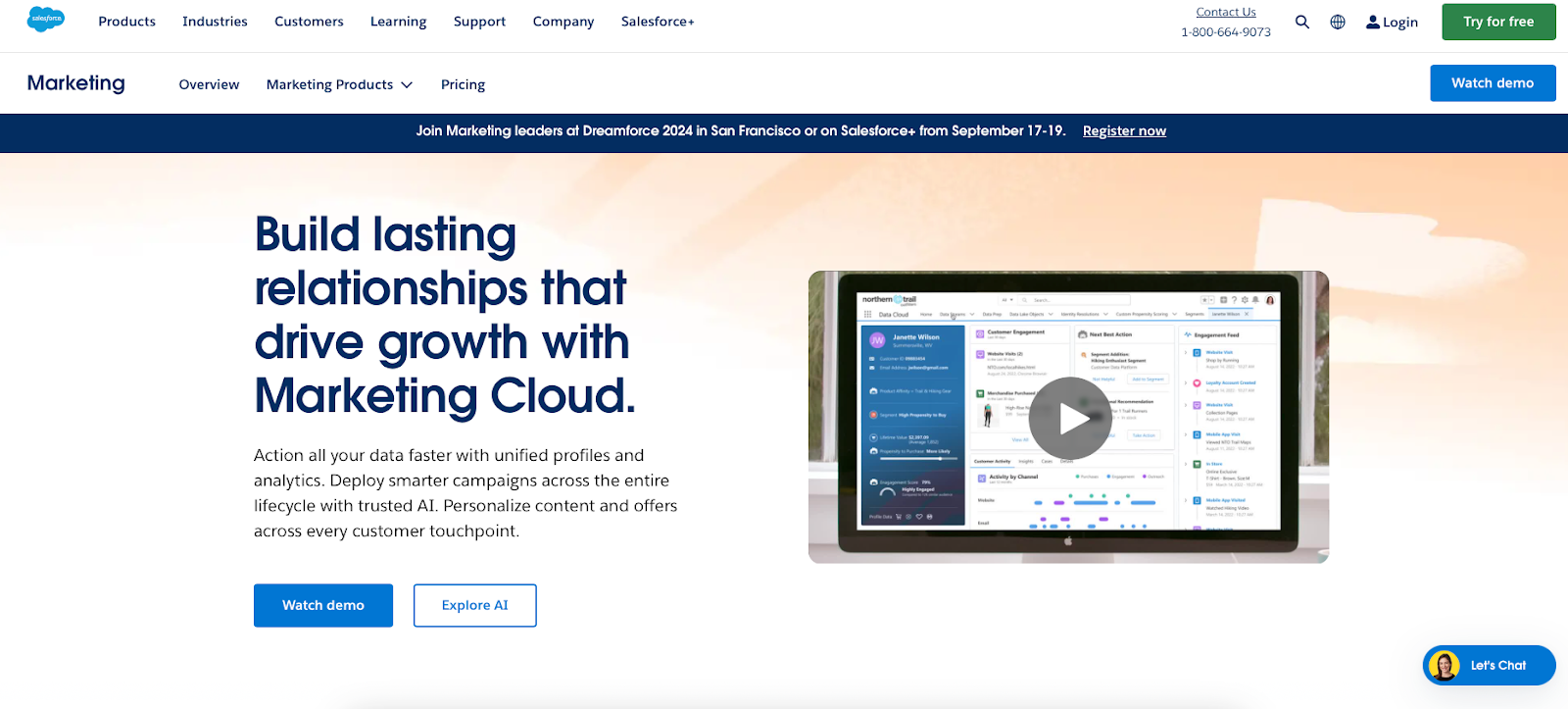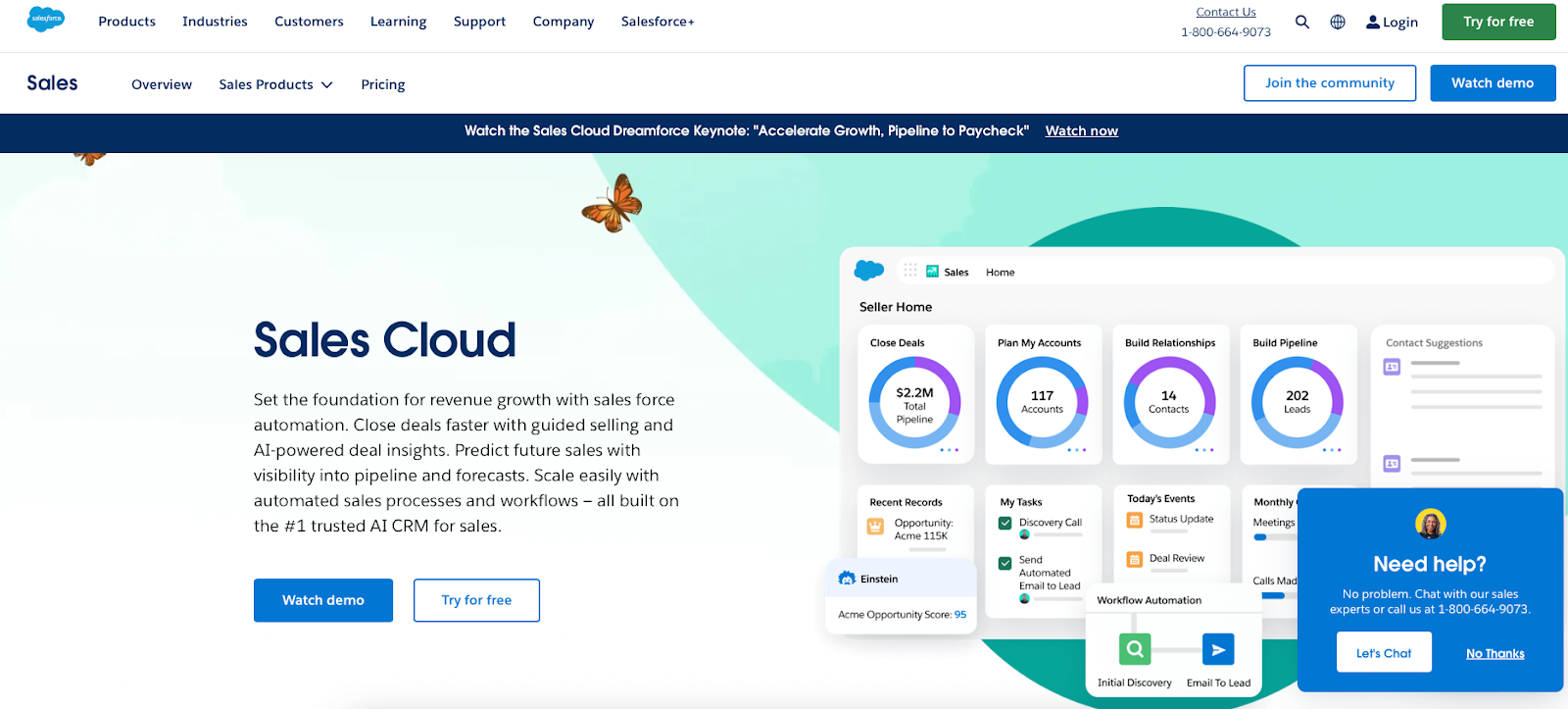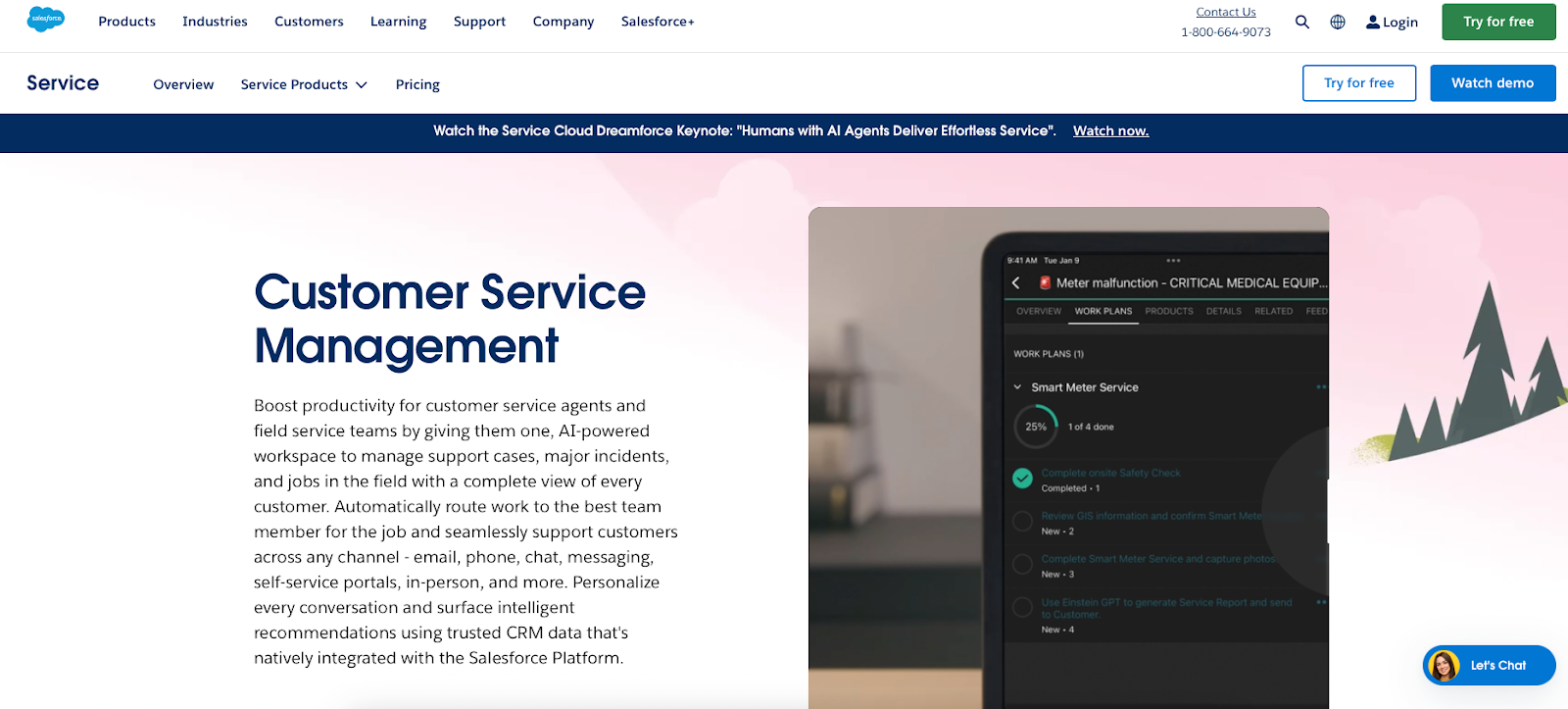Customer is king’ is a cliched but highly relevant statement in today’s world. Why? For starters, customers are spoilt for choices. For every product and service they seek, there are at least 10 solutions available in the market. As a business what do you do to beat the competition? Simple, make them feel special. And how do you achieve it? By carefully designing a successful customer journey. In this article, we are going to dive into this popular term often used in the sales and marketing world. Plus we are going to highlight some of the popular tools useful in streamlining different stages of a customer journey.
What is a customer journey?
In simple words, it is the complete experience a customer has with your brand. It typically includes interactions across all the channels, devices, and touchpoints. From the time they come to know about your brand till the time they recommend it to others, every step is part of a customer journey. In other words, a customer journey encompasses an entire customer lifecycle – from awareness to loyalty.
Key stages of a customer journey (Customer POV)
There are 5 stages in a typical customer journey, and we are going to classify them into the following 3 categories –
Before purchase
This phase starts with the customer looking to improve their business. They may face a pain point such as a lack of productivity or efficiency in their team. Initially, they do not know how to solve these pain points. But then comes a trigger where they discover an opportunity to solve them. It could be sales numbers going down or customer complaints surging.
This is also the stage where the customer starts searching for a solution to their problem. In this initial search, they will come to know about the best solutions to their problems, including yours. This is often called the awareness stage of the customer journey However, this often leads to a “long list” of potential solutions.
During purchase
In this phase, the customer converts the long list into a shorter one by doing a thorough brand review. They will consider your service as a potential solution to their pain point. This is called the consideration stage. They will contact you and the other shortlisted vendors to give a demo. Post-demo, the solutions will be reviewed and if you have succeeded in convincing them, your solution will be chosen. This is called the purchase stage. The implementation process begins officially.
Post-purchase
This is the phase where implementation is complete and the solution is up and running. For you, this stage involves training all the users and giving them access to an account manager for support (when they need it). You continue to follow up and help the customer reach their goals and ensure that they continue to partner with you. This is the retention stage. If you have succeeded in offering the best experience to the customers, they will become loyal to your brand and become brand advocates. This stage is called the advocacy stage.
Challenges in designing a customer journey
Here are some of the key challenges typically encountered by businesses while designing a customer journey –
Challenge #1 – Unable to accurately map how customers move through the journey
It is not easy to collect and interpret customer data. This is true when you do not have the right tools at your disposal. Most businesses lack clear insights into how their customers will behave. They also do not know their preferences and pain points. Without such information, it becomes difficult to craft a journey that aligns with business needs.
Challenge #2 – Unable to create a consistent experience across all channels
Your customers will interact with you via social media, websites, stores, and customer service. It is not easy to ensure consistency in messaging, tone, experience, and quality across all these touchpoints. Lack of consistent experience across all channels will impact the brand recall and you might miss out on key opportunities.
Challenge #3 – Unable to personalise the journey
It is important to personalise the journey for different types of customers. However, scaling this across a large customer base can be overwhelming, particularly for small businesses. Most businesses struggle to implement effective segmentation. They also fail to adopt personalised content due to limited resources or a lack of right tools.
Challenge #4 – Unable to track the effectiveness of the customer journey
Most businesses are able to identify relevant KPIs and use them to measure success. However, they struggle to connect these metrics back to the specific stages of the customer journey. They consider it complex, especially with fragmented data systems. This is particularly true, when they do not have the right tools at their disposal.
If you carefully notice these challenges, you will find the common thread linking all of them is the lack of right tools to design the customer journey. To help you in this regard, we are going to take a look at different tools in the Salesforce SSOT ecosystem that can not only overcome the above challenges but also streamline the whole customer journey.
Marketing tools used to streamline customer journey
Here are some of the key marketing tools you can adopt in the Salesforce ecosystem to streamline the ‘before purchase’ phase of customer journey –
Salesforce Marketing Cloud
This is the most important tool you would need in the before purchase phase. It lets you effortlessly manage customer engagement across different channels including common ones like email, mobile, social media, and ads. With this tool at your disposal, you can also personalise your marketing campaigns and automate workflows. The best part – you can gain deep insights into customer behaviour allowing you to create tailored, data-driven campaigns.
The following tools can be integrated with Salesforce to streamline the customer journey in the before purchase phase –
- Demandbase Salesforce Integration: It is a popular Account-Based Marketing (ABM) platform. Using it, you can target high-value accounts. It is adept at combining marketing and sales data with AI-driven insights. Once it is integrated with Salesforce Marketing Cloud, it provides real-time insights on target account engagement directly within Salesforce.
- ZoomInfo Salesforce Integration: It is a data intelligence platform. Using it, you get access to unlimited contact and company information. Your marketing team can effortlessly identify and target high-value prospects with zero effort. When integrated with Salesforce, ZoomInfo enriches CRM records with detailed data. It improves personalisation and increases the effectiveness of your marketing efforts.
- Prezi Salesforce Integration: It is a presentation platform. It offers interactive, zoomable presentations to make your marketing campaigns more engaging. Once integrated with Salesforce, it allows your marketing team to make the customer interactions more presentable. It also feeds engagement data back into Salesforce.
- MailChimp Salesforce Integration: It is a widely-used email marketing platform. It allows you to create and automate email campaigns to engage your audience. Once integrated with Salesforce, it syncs contact lists and customer data automatically. This ensures that email campaigns are personalised and relevant. It also automates email workflows based on triggers from Salesforce.
Sales tools used to streamline customer journey
Here are some of the key sales tools used to streamline the ‘during purchase’ phase of customer journey –
Salesforce Sales Cloud
Salesforce Sales Cloud is an all-in-one CRM platform. It optimises the customer journey by empowering your reps to manage leads and customer interactions in a single dashboard. It centralises all sales-related activities, giving you a 360-degree view of each customer. From initial contact to closing the deal, you can track the customer journey with great accuracy using Sales Cloud. It is also the only tool you need to manage pipelines and forecast sales
The following tools can be integrated with Salesforce Sales Cloud to streamline the customer journey in the ‘during purchase’ phase –
- Outreach Salesforce Integration: It is a sales engagement platform that automates communication workflows. It simplifies follow-up processes and reduces friction in the customer journey. Once integrated with Salesforce, it provides a unified view of the sales pipeline. It also strengthens the ability of Sales Cloud to make more accurate forecasts.
- Spotio Salesforce Integration: It is a field sales management tool designed to enhance the productivity of outside sales teams. It provides mapping and territory management features that enables your reps to focus their efforts on the most promising areas. By integrating Spotio with Salesforce, you can bring real-time field data into the CRM. This is a must-have tool for all those working in a hybrid model
- Clearbit Salesforce Integration:It is a data enrichment platform that automatically gathers firmographic and behavioural data on leads. You get granular insights into potential customers. This allows for more targeted outreach in the purchase phase. When integrated with Salesforce, Clearbit updates contact and account records automatically. It ensures that your sales teams always work with the most accurate and relevant data.
- SMS-Magic Salesforce Integration: It is a messaging platform designed to facilitate customer communication via SMS, MMS, and WhatsApp. Your sales team can engage with prospects and customers directly through personalised messaging. When integrated with Salesforce, it logs all messaging interactions within the CRM. This way, you can ensure that no lead falls through the cracks.
- Tenfold Salesforce Integration: It is a customer experience platform that integrates with phone systems. It captures and logs customer interactions in real-time. It also offers contextual insights during phone calls. Integration with Salesforce ensures that all call data is automatically captured.
- Drift Salesforce Integration: It is a conversational marketing platform that enables real-time chat on your websites. With instant messaging, it helps you move prospects through the customer journey more efficiently. When integrated with Salesforce, Drift syncs lead data and conversations directly into the CRM. Your sales team gets access to visitor activity within Salesforce.
Also read: Salesforce vs HubSpot comparison guide
Post Sales tools used to streamline customer journey
Here are some of the key sales tools used to streamline the ‘post sales’ phase of customer journey –
Salesforce Service Cloud
It provides you with a comprehensive suite of tools designed to enhance customer support and engagement. It enables organisations to manage customer inquiries, complaints, and support requests seamlessly across various channels, including phone, email, chat, and social media. With features like case management, automated workflows, and AI-driven chatbots, Service Cloud ensures that customer issues are addressed quickly and efficiently, minimising resolution times and improving satisfaction.
Also read: Accounting Software Comparison Guide
- Stripe Salesforce Integration: It is a payment processing platform that simplifies and secures online transactions. It ensures customers experience hassle-free subscription management, and recurring payments. Its automation of invoicing, refunds, and fraud prevention reduces manual intervention, allowing you to focus on customer retention. When integrated with Salesforce, Stripe provides real-time transaction data, helping your customer service team address payment issues swiftly and maintain a seamless relationship post-purchase.
- Value Analytics Salesforce Integration: It offers in-depth insights into customer behaviour and product usage. It helps in tailoring follow-up strategies including engaging customers with relevant upsell or cross-sell offers. With Salesforce integration, Value Analytics provides a clear view of customer health metrics, helping you resolve issues proactively, and strengthen long-term loyalty.
- Five9 Salesforce Integration: It is a cloud-based contact centre solution that enhances post-purchase customer support. It ensures that customers can easily get the support they need after making a purchase. Integration with Salesforce allows your support agents to have access to customer histories, enabling faster resolutions and improving overall customer satisfaction.
Conclusion
And that’s pretty much everything about the customer journey and how you can streamline it in your organisation. As you have seen in this post, Salesforce is the only platform you need for automating workflows and processes related to customer journey optimisation. However, we understand implementing and maintaining such a vast system of tools is not easy. And that’s where we can help. We are Brysa, UK’s leading Salesforce consultant, who can help in designing a seamless customer journey for your business using Salesforce. To know more about us, contact us now.




